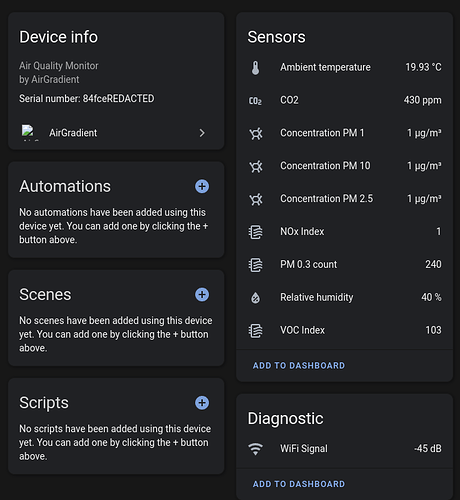I’m working on a Home Assistant integration that enables AirGradient devices running stock firmware to be integrated with HA.
It works by exposing an HTTP endpoint to which the devices can post their measurements (mimicking the dashboard API). New devices are automatically discovered when data arrives.
The only device I can test with is the AirGradient ONE V9, so that’s what’s currently supported. Other devices may work fine but YMMV.
To use this integration you must change the APIROOT variable in the firmware to the URL of your local Home Assistant server (i.e.: http://homeassistant_host:port/)
Instructions can be found on GitHub: GitHub - just-oblivious/airgradient_ha: Local AirGradient integration for Home Assistant. Installation through HACS is recommended to stay up-to-date.
When everything is setup correctly your devices should be discovered automatically:

When a device is first seen its measurements are enumerated and sensors are created:
There’s still some polishing left to do before this can become a compliant HA integration that conforms to the HA development guidelines (like the missing logo).
I appreciate your feedback on this.

